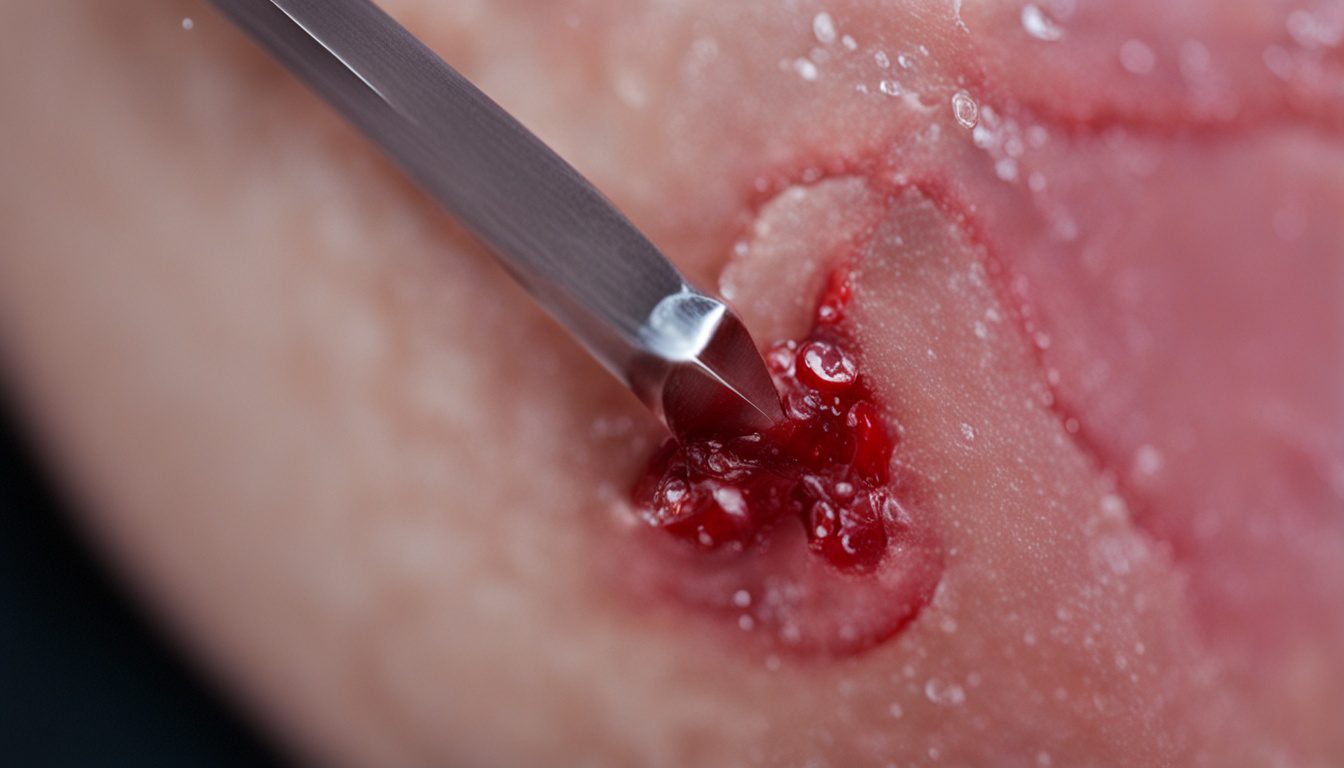A cyst is like a closed sac. It can hold air, fluid, or other materials. They can happen inside or outside the skin. Many things can cause these cysts like issues in your genes, problems during your growth before birth, or even infections. The types of cysts are many, but they all look similar. They all have a wall and layers.
Sebaceous cysts are one type that forms in the sebaceous glands. You might find them on the face, neck, or torso. Most are not cancer and don’t need treating. But, they can look bad or cause trouble if they break open or get infected. Doctors are looking at ways to treat these cysts using stem cells. This could help by fixing the way cysts form.
- Cysts are sac-like structures that can form in and outside the skin.
- Sebaceous cysts develop in the sebaceous glands and can be found on the face, neck, or torso.
- Most sebaceous cysts are non-cancerous but can be bothersome or lead to complications.
- Stem cell therapy shows potential as a treatment option for cysts.
Symptoms and Causes of Sebaceous Cysts
Sebaceous cysts are a common skin issue. They show up as bumps of various sizes on the skin. These bumps can be seen on the face, neck, or body. They are usually white or yellow and are filled with a thick, solid material. If moved, they slide under the skin. Some might even have a blackhead at the center.
But watch out for the red flags. If they get infected, they can cause the skin to swell, hurt, and look red. Such cases need immediate attention. In very rare cases, a sebaceous cyst might even turn into skin cancer. This is why it’s wise to get any strange growths checked by a doctor.
Symptoms of Sebaceous Cysts
These cysts look like small round bumps. People often notice them on their face or upper body. They are usually light brown, white, or yellow. These bumps feel hard to the touch and rarely hurt. They might also have a small black spot at their center.
In some cases, these cysts might get bigger or hurt. They can swell and turn the skin red. You should seek a doctor’s advice if this happens.
Causes of Sebaceous Cysts
Sebaceous cysts form when skin cells block glands and get trapped. This blockage causes a cyst to form. There are several reasons this can happen. For example, changes in hormones during puberty and a history of acne can make you more prone to cysts. Also, too much sun can thicken your skin, leading to cyst development.
In general, sebaceous cysts are more common in males than females. Consulting a healthcare provider is best for diagnosis and treatment.
Diagnosis and Treatment of Sebaceous Cysts
Doctors will check you out and ask about your medical past to diagnose sebaceous cysts. They look at how the cyst looks, its size, and where it is to see if it’s a sebaceous cyst. Sometimes, they might need to do more tests to make sure it’s not cancer, especially if it’s strange or causes worry.
If the cyst is small and doesn’t cause any problems, you might not need to do anything right away. The doctor could suggest waiting to see if it gets worse.
But, if it’s big, hurts, or bothers you because it’s not nice to look at, you might need treatment. The usual way to treat sebaceous cysts is by surgery. They remove it when it’s not swollen, which helps prevent it from coming back.
Let’s talk about the different ways to get rid of these cysts:
- Conventional incision: The doctor makes a small cut in the skin and takes out the cyst. This works well for small, easy-to-reach cysts.
- Minimal surgical technique: With this way, they make a tiny cut, push out the stuff inside the cyst, and take it out. Then, they let the wound heal on its own.
- Elliptical excision: They cut out the whole cyst and some of the skin around it. This is for bigger cysts or ones that were infected before.
- Carbon dioxide laser surgery: They use a laser to take out the cyst. This is a gentle way for smaller cysts, and it helps avoid scarring.
Trying to squeeze or remove these cysts yourself is a big no. It can cause infections or make things worse. Always see a doctor for this.
After having a cyst removed, you might need stitches. Your doctor will tell you how to take care of the wound so it heals well and doesn’t get infected.
Some people suggest home treatments for sebaceous cysts, but it’s best to check with a doctor first. They can give the right advice for your situation and make sure you get the best treatment.
Conclusion
Sebaceous cysts are common growths in the skin’s glands. They often appear on the scalp, back, face, and more. These cysts are not usually dangerous but can be painful if they get infected or burst.
These cysts show up as small, round lumps. You can move them under the skin. They often look white, light brown, or yellow. They happen when some skin cells grow too much and don’t shed away like usual.
Doctors mainly check these cysts by looking and asking about your health. Sometimes, they do more tests to be sure it’s not skin cancer. Getting rid of the cyst surgically is one way to treat them. It’s important to see a doctor for the right care. This avoids further problems and helps you get better.

